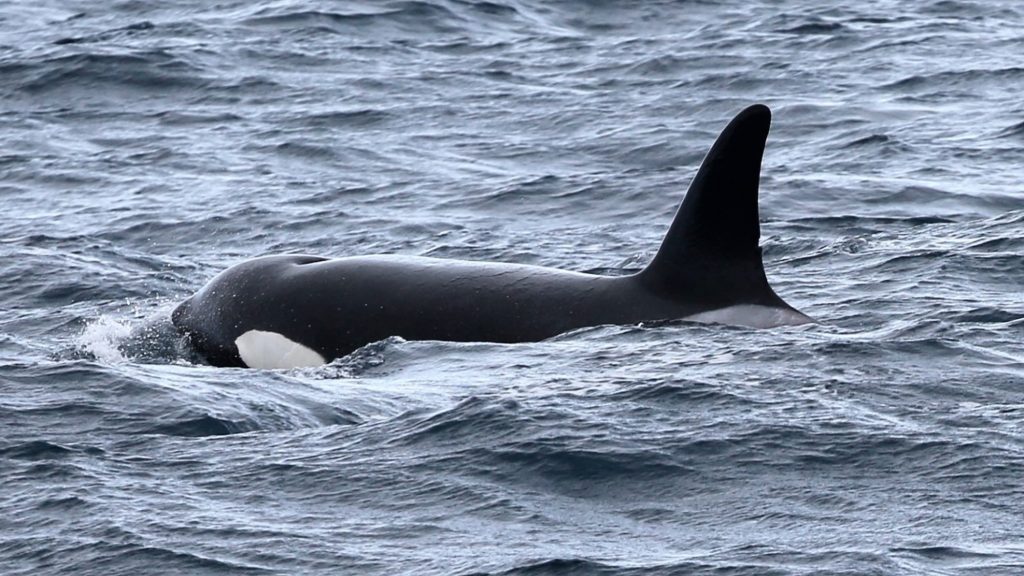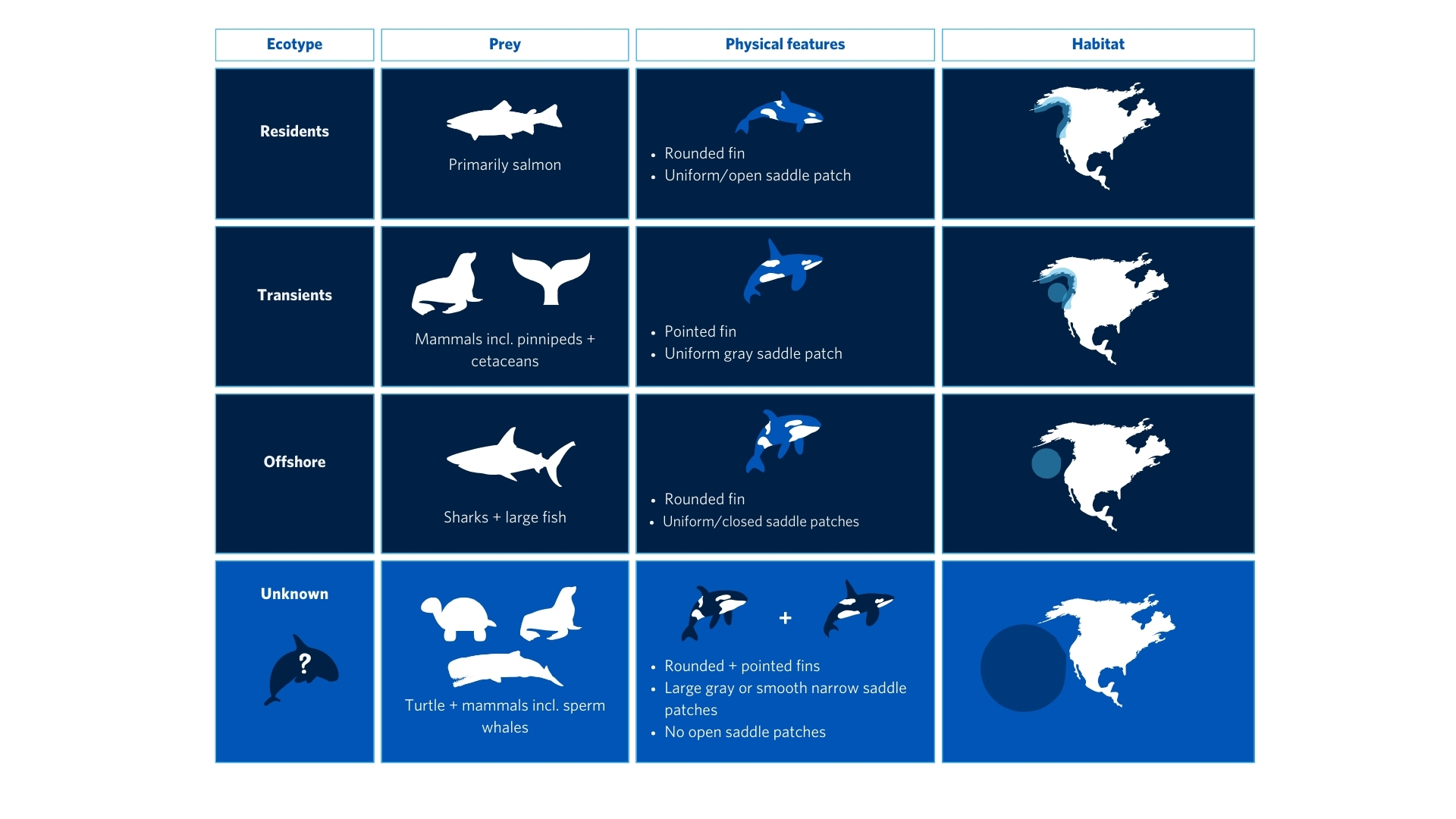Orcas with particular shark-bite scars could be new type of killer whale: study

Posted March 15, 2024 11:55 am.
Last Updated March 15, 2024 1:21 pm.
Could there be a new ecotype of killer whales in Pacific waters?
Researchers at UBC say a group of orcas seen hunting off the coast of California and Oregon could belong to a subpopulation of transient killer whales. They could even be a unique population found in those waters, a new study explains.
While the 49 “unknown orcas” have been seen before, researchers say they now have “a weight of evidence” from several encounters between 1997 and 2021 “to form a solid hypothesis.”
Study lead author Josh McInnes, a masters student at the UBC Institute for the Oceans and Fisheries (IOF), says he took an interest in finding out more about killer whale populations south of B.C. and Washington state, “particularly what was going on way off shore.”
“Killer whales are really thought of as being a coastal species,” he told CityNews Friday.
“I was spending a lot of time out in Oregon and California and I was having conversations with fishermen, people that are spending their time out on the water, and they’re like, ‘We see killer whales all the time out there.'”
That, he says, was surprising, given how far off-coast some of these sightings were.
McInnes partnered up with some colleagues and government officials to try to piece together what was happening.
“So we were cataloguing all these different whales because we can identify them based on the shape of their dorsal fin — which is the big fin — and then also the grey saddle patch by the fin, which has got scars and markings. And that’s kind of how we identify individual whales. As we were doing that … there were these certain whales from these sightings that were way off-shore — we’re talking 60 to almost 400 kilometres from the coast. We didn’t recognize any of them,” McInnes explained.
There are three ecotypes of killer whales near California and Oregon. They include the residents, transients, and offshores — the first two of which are often spotted near the coast of B.C.
But the new group of whales McInnes describes didn’t really fall into any one of these three categories.
Most of the whales in this group featured unique physical markings — scars believed to have been caused by cookiecutter sharks.
“Out in the open ocean, there’s a species of shark that is a parasite, basically. It will take off big chunks of tissue, like a cookie cutter, and will do this to other sharks, fish, tuna, large whales — that’s kind of how they make a living. And so we saw these scars on these killer whales … and none of these scars we’ve ever seen on any of the killer whales on the coast of California, Washington, B.C. … which really kind of stood out as that these animals are spending their time in the open ocean,” McInnes explained, adding almost all of the whales in the group had these scars.
“This was really exciting.”

The other thing, McInnes says, is that these killer whales were seen feeding on marine mammals.
“Right now, we don’t know what kind of killer whales these are. We don’t know if they’re transient, we don’t know if they’re offshore. We don’t know. What we do know is that they’re feeding on marine mammals, which is kind of very similar to the diet of the transients that we see in B.C. that also feed on marine mammals,” he said.
“But the difference is some of the marine mammals they were feeding on were species that are typically in the open ocean.”
He notes these whales have been documented attacking sperm whales, elephant seals, dolphins, and other animals.
“So, we hypothesize, at this point, that they may be an undescribed population … because it was also reported a sea turtle was taken,” he added.
The next step, McInnes says, will be to get genetic samples. He notes researchers are also enlisting the help of fishermen to track sightings and get more photographs.
“It’s pretty unique to find a new population. It takes a long time to gather photos and observations to recognize that there’s something different about these killer whales,” explained co-author Dr. Andrew Trites, a professor in the IOF.
McInnes says the study “drives home that there’s a lot of changes happening in the ocean right now.”
“One of them is that we’re kind of getting into the clean energy sector, which just means that we’re putting wind farms out into the open ocean, offshore especially like in the Oregon region,” he said.
The more information is gathered and available, the more questions can be raised about the future, McInnes says.








